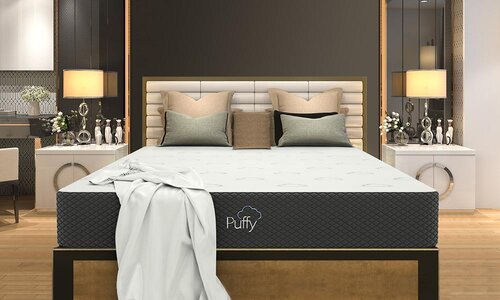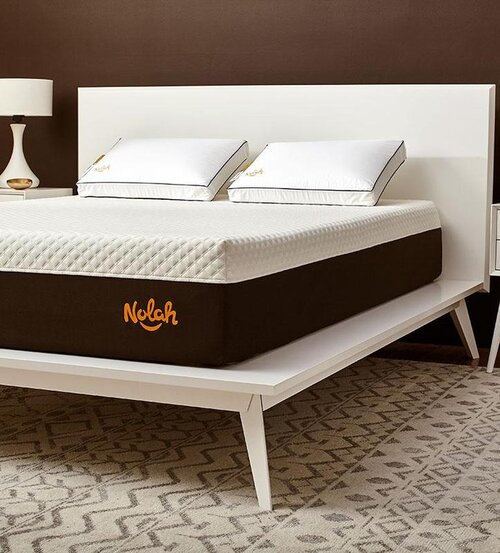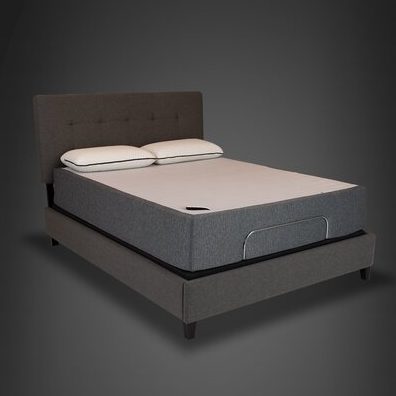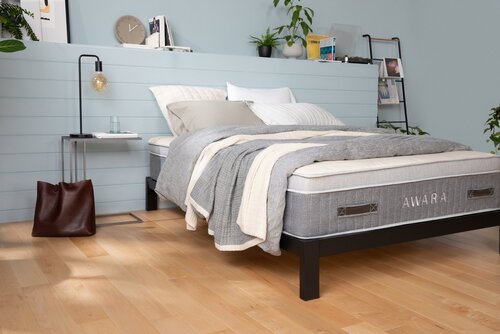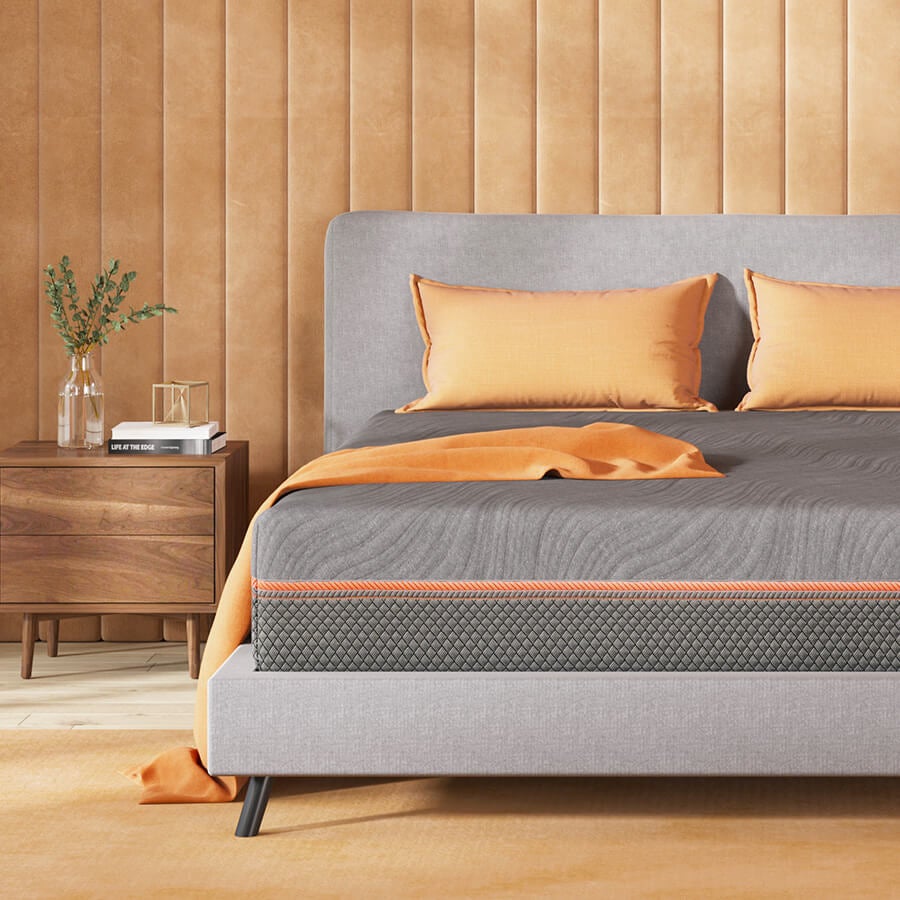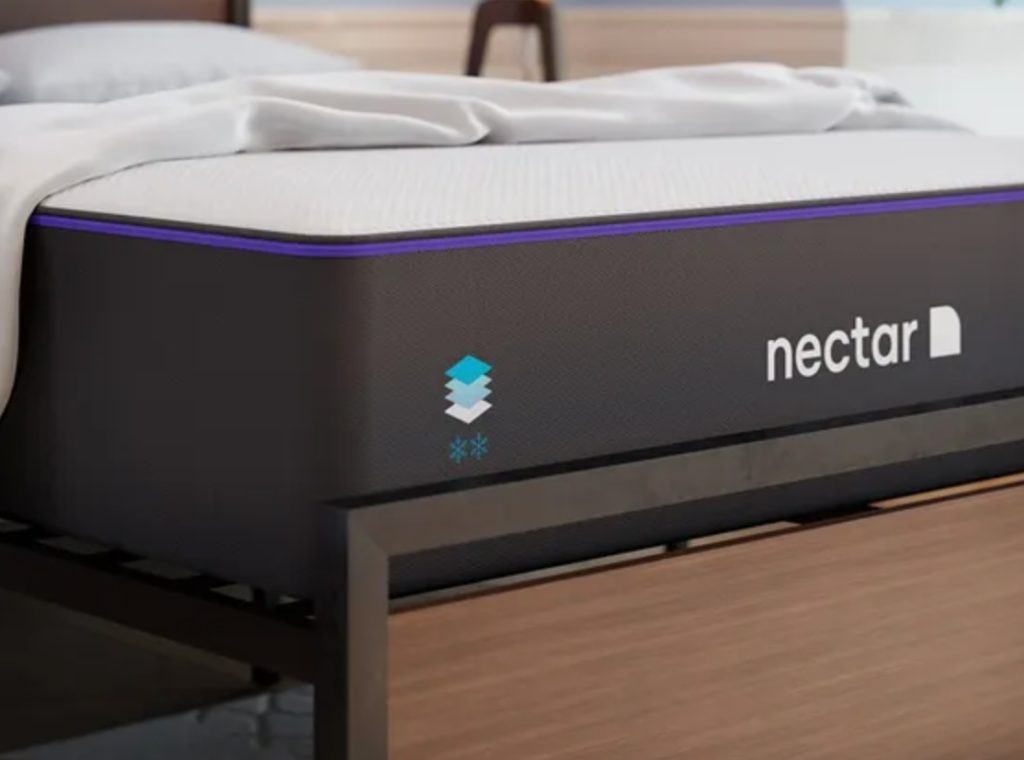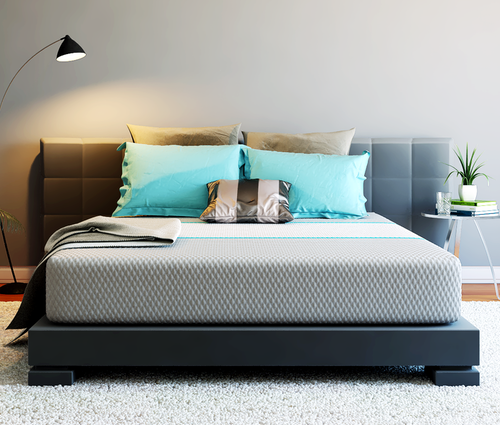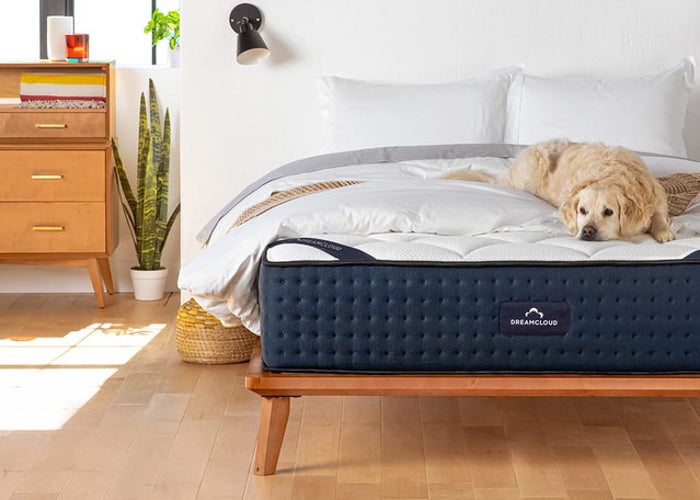An Insider’s Guide To The Best Mattresses Sold Online
Looking for a list of the best mattresses and want more information? On this page, you’ll find an expert’s selections of the best mattresses sold online right up top. Selected from over 250 candidates, these mattress options deliver sumptuous, luxurious comfort…all at reasonable prices backed up with great return policies and warranties.
Each option was reviewed and hand selected by our senior editor, Marc Anderson, a 25 year mattress industry veteran who has designed and manufactured dozens of his own mattresses, selling them on his own web sites for more than two decades – until he moved from retailing to reviewing and recommending mattresses to shoppers just like you- cutting out the mystery and misery of mattress shopping!
Here’s why Marc’s carefully curated lists of outstanding mattress options are considered the best:
- Retailers on his list use the highest quality components that resist settling and rutting over time
- Each option is considered best in class in their category- proven with superior customer reviews
- Selected retailers don’t skimp on fabrics and textiles used for the outer covering of his options
- All selections were vetted for outstanding warranties, return policies, and customer service
- Most of his options sell for us up to 50% below comparable mattresses in their category
- Marc is a memory foam, latex, and coil expert- and consults with many industry titans regularly to advise them when creating new mattress designs. Check out his LinkedIn page here
A Handful Of The Best Mattress Options Recommended By An Industry CEO And Bedding Expert Who Spent 25 Years As A Manufacturer
THE PUFFY ORIGINAL MATTRESS
My choice for overall best mattress. Designed for side, back, even belly sleepers- delivers best in class pressure relief, precision spinal alignment, with a sumptuous, nest-like feel. And, a queen costs just $1049 with my deal.
Uses their own brand of low VOC and formaldehyde free foams. Owners give it a 4.9 out of 5 star rating. Free shipping, a great trial period, with unbeatable warranty.
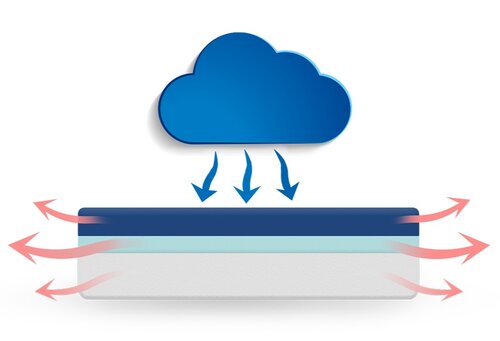
Get a free king pillow and $300 off the $1,249 price in queen. Components, sewing and construction, all done in USA. I like Puffy’s style as well as their mattress program. They donate to a wide variety of children’s charities, putting a lot of effort into it.
NOLAH ORIGINAL MATTRESS: INVENTED FOR SIDE SLEEPERS
Soft and sumptuous, and built for side and side/back sleepers, The Nolah Bed is made with clean ingredients, including a specialized material called cooling AirFoam™. It’s scientifically proven to provide 4x better pressure relief on hips, shoulders, and back. Also, the company donates proceeds various wildlife management organizations. A good way to give back. Lifetime warranty, and a solid 120 night trial.
THE ANTI-AGING BED®: 5G AND EMF SHIELDING WITH PROVEN TECHNOLOGY
Hybrid mattress featuring EMF and 5G radiation shielding system. FDA backed technology using static and charge removal surface. Detox, remove free radicals, and get restorative and recharged rest. An “information age” bed. Order the Anti-Aging Bed® or cover only for existing mattress.
THE AWARA MATTRESS: LEVITATE YOURSELF
This outstanding natural latex hybrid bed is loaded with clean, chemical free ingredients. You’ll nest upon a breathable organic quilted top, and beneath you, your body floats on 4” of botanical Dunlop latex. Individually pocketed coils suspend and hover you above the base layer of medium high density foam that won’t break down. Delivered with 365 day no questions asked trial and FOREVER warranty! Now, how cool is that? Our #1 Hybrid Latex/Coil Choice.
SWEETNIGHT WHISPER REVERSIBLE MATTRESS: TWO BEDS IN ONE
A wonderful gel foam mattress without all of the middleman costs. Just $540 in queen, the Sweet Night Breeze Mattress is perfect for those who tend to sweat and lose sleep due to summer heat. It’s also designed to help keep your spine straight while you sleep.
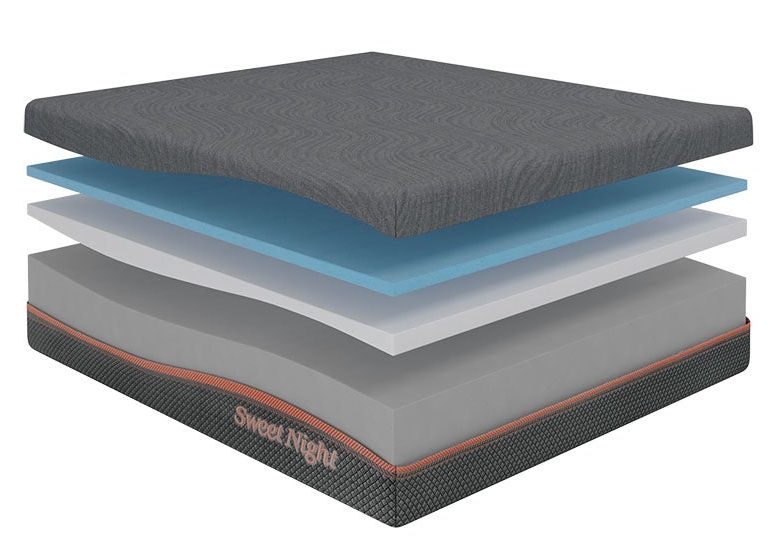
For the price, and considering that I’ve used the same components myself with my own designs, you can’t beat the price. Free ship, 10 year warranty. Quality components and one of the best deals we’ve reviewed.
THE NECTAR PREMIER MATTRESS
The Nectar Mattress is by far one of the most popular beds you can buy. Get $100 off with our link. Outfitted as a gel/memory foam mattress, it also uses CertiPur® non-toxic ingredients.
No odor, no exposure to heavy metals. 365 Day Trial, Forever Warranty. Free sheets, 2 pillows, and mattress protector! Get a queen for just $799!
Super consistent reviews, this bed’s one of my favorites in the memory foam category. Nectar is heavily advertised and successful..for a reason: well crafted, cleaner components, and higher quality premium memory foam.
HABITAT ASCEND NUMBER STYLE ADJUSTABLE DIGITAL AIRBED
Habitat Furnishings offers the best digital sleep number style airbed on the market. For half the price of the big name brand, you’ll get a mattress that lets you control an infinite range of soft to firm settings. The bed is made with both natural latex and premium memory foam, and includes a quilted bamboo comforter top built right in! LED remote controls with memory setting. Get a 90 Day Free Trial, solid warranty. Entirely made in Baltimore, MD.
THE HYPHEN MATTRESS: COPPER INFUSED
A uniquely designed foam hybrid mattress that offers a moderate degree of plushness and support. Copper infused foam provides antibacterial qualities. 10” finished height, 100 night trial, 20 year warranty, $950 for a queen. Free shipping. Very forward thinking mattress system. Made in their own factories, no middlemen.
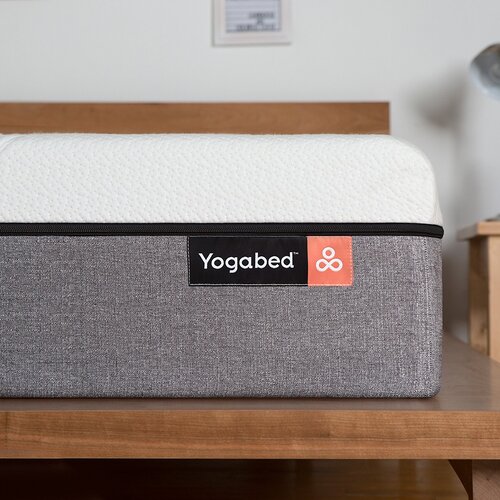
YOGABED MEMORY FOAM MATTRESS
This outstanding mattress was designed with performance in mind. Four layers of carefully tested memory foam and support layers create the perfect alchemy for sleep. Removable and washable cover, 101 Night Trial, solid 10 year warranty, and no hassle free returns. Stellar reviews, high quality memory foam.
DREAMCLOUD LUXURY HYBRID
Described as a soft, breathable sanctuary, the Dreamcloud is one of my favorites. With a sumptuous cashmere quilted top, floating pocketed coils, and a quality 4lb density gel infused memory foam, this bed ia a perennial favorite of mine to recommend. keeps you in a constant state of sleep euphoria.
A true hybrid mattress with pocketed coil system that provides excellent edge support, memory foam and gel foam layers, motion transfer reducing layer, and quilted cashmere top. A queen on sale: $999, free ship, 365 day trial. Best in class, a fantastic deal- you get free pillows, sheets, and mattress protector as well.
The components used, especially the foams, and pocketed coil unit, are sourced from the same factories I’ve used for 20 years.
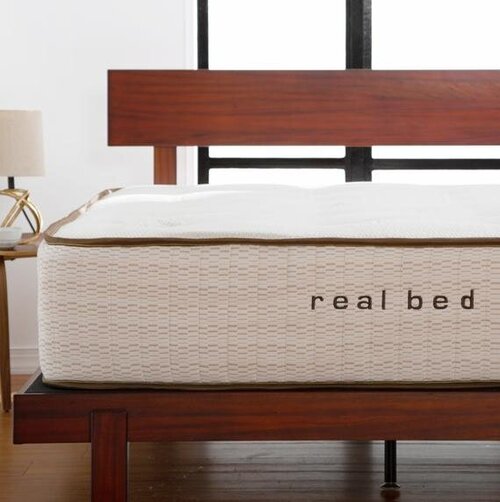
THE REAL BED – SUPERNATURAL COMFORT FOR COUPLES
An outstanding natural mattress that delivers supernatural comfort and levitating support. An organic outer quilted cover, a layer of eucalyptus infused rayon that cools, organic wool, 3” of pure botanical latex all floating above a pocketed coil system that evenly supports your body. Supports your spine with pinpoint precision. Compare at $1800 and up. Queen $950, Our #1 choice for a mattress for couples.
Insider’s Guide To Finding The Best Mattress Sold Online: Tips And Secrets From An Industry Pioneer, Not Digital Marketers Or Inexperienced Sales People
I wade through hundreds of bedding options to save you time and money, test them and rate them, hopefully reducing the amount of time you have to spend shopping online for a mattress that will provide comfort and support. I’m Marc Anderson, an industry CEO and veteran with over 25 years of bedding design and fabrication experience, and I’m going to break down the online mattress shopping racket for you – fast.
You’re going to get the basics on “bed in a box” options, and then I’m going to send you to our Trusted Dealer page and set you up with about 120 online mattress stores with a variety of mattress options for many needs. If you want to check out mattresses by preference category, you can go to the top of any page and click the mattresses by category tab.
First of all, definitely stick to the web to make your purchase. Competition is fierce, quality is high, and online retailers are trying to outperform one another with pricing, excellent service, and innovative bedding products.
It’s easy, streamlined, the options are pretty straightforward and you don’t have to deal with pinky ring wearing hovering sales guys trying to scam you with cups and balls craziness (ever been in a brick mortar mattress showroom?).
The mattress industry has been slow to realize how much Americans hate mattress shopping. In an article by qz.com, which discusses the downturn and ultimate bankruptcy of the bedding retail giant Mattress Firm, the chain never escaped the fumes from the sleazy atmosphere that plagued brick and mortar stores, according to this article.
These days, suddenly, the internet is alive with hundreds of bed in a box companies selling the next generation of mattress options. But, you have to be careful to avoid the sleazy operators in this realm, too. We can help with that.
Also, if you are going to comb through so-called “best mattress review” sites, realize that much of what you are reading are generally the opinions of marketing and merchandising experts with lots of tech experience, but little or no bedding industry, and more importantly, bedding components background.
Even worse, many of the most prominent mattress review sites have cozy arrangements with many larger manufacturers and e-commerce sites to skew your shopping options by ranking and rating their products to keep the flow of hefty commissions moving. This also causes retail pricing to increase far beyond the caliber and quality of a mattress you might purchase. Let’s get to the basics.
First of all, almost every single mattress option you will find online, surprisingly, is designed and manufactured using a very similar template of construction. The foam components that are used in almost all of the choices we recommend are designed to be compressed and rolled, shipped directly to your door, where they unroll, expand, are ready to use, typically within an hour.
The format with a typical foam or foam hybrid mattress follows pretty standard construction. Here’s a run down on the typical configuration on a foam mattress you’re likely to buy:
Understanding Mattress Design Basics
In almost all bed in a box mattress options. a mattress is going to start with a bottom layer made using a high density foam made using a firmer, more supportive polyurethane foam.
These days, these “substrate” or foundation layers are extremely reliable, won’t collapse or rut over time, and are fairly lightweight, making handling and moving your bed a snap. For more in depth information about mattresses in general, visit our Beds 101 page.
Above the foundation layer is typically another layer of slightly less dense, and more yielding polyurethane foam, and it could be a different kind of material, depending upon the kind of support and comfort you are looking for.
If you’re looking for pressure relief and a little bit of sink, for example, you’ll want to consider memory foam in the middle, or even on the top layer, which is called the “comfort layer”. This layer delivers the signature feel of the bed itself.
Memory foam is one of the most amazing ingredients you can consider, at least as part of the “cake recipe” of your best mattress options. It’s a key ingredient in any decent foam hybrid mattress.
I’ve slept on memory foam for 15 years, and wouldn’t trade it for anything. Very little failure issues, that wonderful embracing and body enveloping sensation is totally amazing. Actually, it’s a layer in many of the mattress options we recommend on our Trusted Mattress Dealers page.
Our mattress reviews which show higher ratings are likely using a superior quality memory foam manufactured in the USA by companies like Carpenter Foam, or Elite Foam.
Softer variations of memory foam will always be at or near the top, and works really well in concert with natural latex, and the memory foam latex combination is the most widely used in the mattress world these days. In an all foam bed, you cannot beat the chemistry of these two ingredients.
Memory foam is of course, a more complex form of polyurethane foam, with slowly leaking cells that move the air in and out slowly, thus giving it that sinking sensation, and the wonderful pressure relieving qualities if offers.
What you want to make sure of, and this is where the bedding components expertise comes in, is to make sure that the memory foam used in any bed you’re considering is at least 4lb density, a higher grade of memory foam.
Don’t buy a bed that incorporates 3lb, or even less. It won’t last, and is likely to crack or split, or simply mash down over time.
If you like a mattress with a livelier, bouncier feel, with more of a buoyant sensation, definitely steer towards latex being that top layer.
You’ll also find that it’s much easier to turn and move on, so if you are alight sleeper or a flip-flopper, and you’re all over the mattress, definitely take a hard look. For one thing, you’ll probably wake up during the night much less often, since you’re not having to dig your way out when you start moving around.
Another really cool thing about latex is that it’s antimicrobial, anti-dust mite, fends off fungal organisms, dust mites hate it, and if you get the all natural version (most online stores use a blend, so if you want the full on antibacterial benefits, visit one of our recommended latex dealers that offers pure latex) you’ll get some extra added benefits.
Made from the sap of a species of rubber tree called Hevea, the jiggly and bouncy stuff is amazing, and can last for 50 years in a mattress without compressing or mashing, and does not break down or pill when exposed to light, like polyurethane will do (though it takes decades).
Our Trusted Dealer page has a section where we provide mattress reviews about latex beds, since eco-friendly and green beds are hugely popular.
Want the wonderful feel of pocketed coils that offer traditional spring like comfort, but with a more advanced, body cradling sensation? Consider a pocketed coil hybrid mattress, which, yes, actually can be rolled and compressed and shipped directly to your door.
Great for side and back sleepers who need targeted support, it’s a viable option to consider. I personally think that a pocketed coil mattress works best when paired up with a latex layer right up top.
Our Trusted Dealers page features several excellent retailers who’ve really put a lot of time into some pocketed coil beds we love, and our mattress reviews tend to rate coil and foam beds slightly higher because of their superior comfort and support benefits.
Graphite infused polyurethane foam is huge right now, and is easily recognizable by its carbon, or charcoal grey color, the result of infusing carbon directly into the foam mix.
This unique foam component works by actively ventilating heat away to the edges of a mattress, and insulates you by preventing heat from collecting in the base layers of foam beneath.
Graphite based foams are usually the consistency of memory foam, so you get additional pressure relieving benefit.
Also, carbon infused foams provide a natural fire barrier, instead of forcing the manufacturer to use chemical fire retardants on their mattresses to comply with the Federal “FR 1633” Flammability laws.
Another amazing component that is becoming more and more popular in the components of many forward thinking manufacturers is copper infused memory foam or latex.
Elemental copper fiber or small powdered pieces are blended into the liquid foam before it is extruded. Copper is a natural antibacterial element, and can even improve circulation, reduce inflammation, and many users swear by its ability to soothe and calm the body.
On our Trusted Mattress Dealers page, we recommend several retailers that specialize in copper infused mattresses. Check them out.
When couples are shopping for the perfect bed, often their needs are vastly different. One needs a softer, plusher surface, and the other partner likes a very firm, resilient sleep surface. How do you solve that problem?
The answer is a digital air bed with independent controls on either side of the bed. Air chambers, usually made of fabric backed vulcanized rubber, expand and contract, varying from soft to firm, as the user pumps or withdraws air from the chambers.
These beds are highly reliable and very popular, and also allow you to modify your own needs if you injure yourself and suddenly need either a firmer or softer sleep surface.
Polymer foams, commonly called “gel foam” in the industry is becoming increasingly popular, thanks largely to Purple, an innovative mattress that uses a jelly like material molded into a kind of ice cube tray design.
Referred to as column buckling foam, this unique material collapses under pressure and forms a cushy mat-like surface allowing the body to conform to the mattress. It has an embracing, hugging like feel.
THE BEST MATTRESS REVIEWS, THE BEST DEALER RECOMMENDATIONS
We recommend only a handful of dealers that offer “bed in a box” mattress solutions online, but they have been carefully vetted and reviewed by myself and our editors, from 400-500 possible options to a mere handful of trustworthy and honest retailers.
Our Trusted Dealers page describes our rating system, and the credentials required to make the cut on our list. I hope this information has helped you sort out the options available online, and made it easier to buy the bed of your dreams!
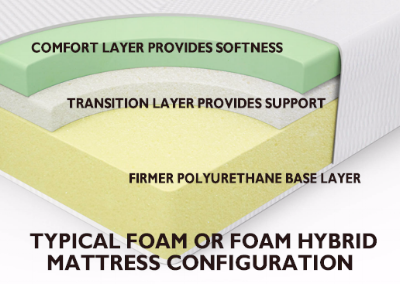
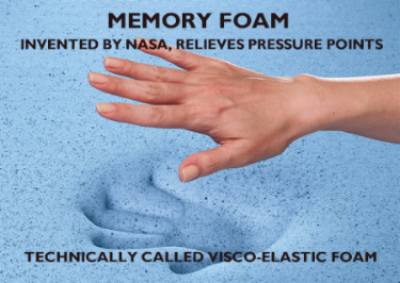
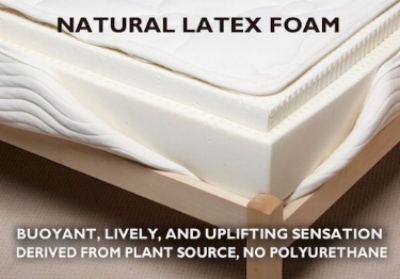

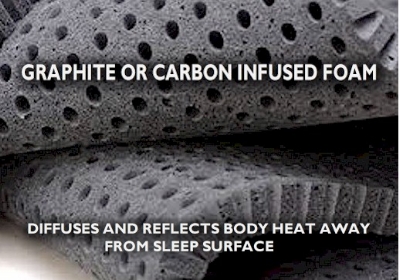
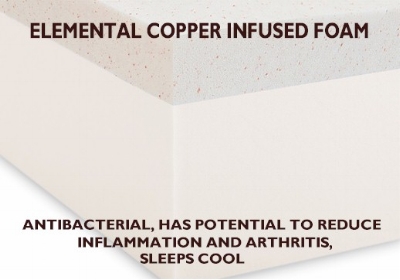
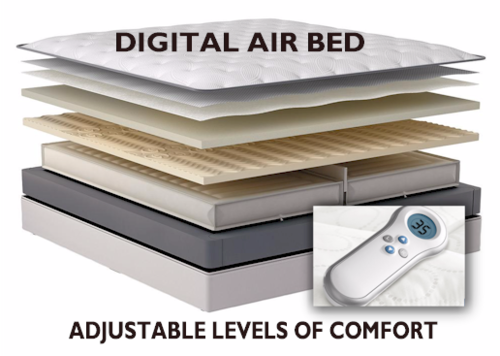
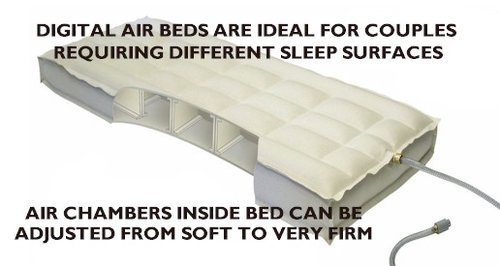
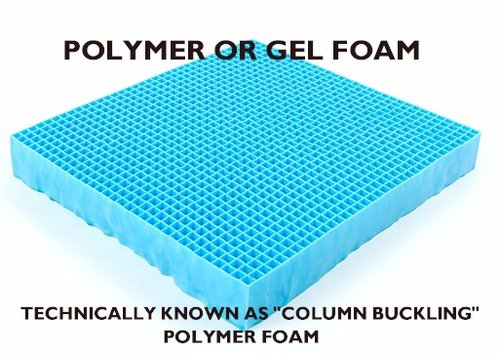
You’ve probably seen a few mattresses out there offering what is typically called “gel foam”, and the configuration kind of looks like an ice cube tray, or grid pattern. One prominent company called Purple Mattress has built an entire product line using this unique material. Technically, it’s called “column buckling foam”, and is made using polymer materials that are more “jelly like” than say memory foam, latex, or other materials.
Each cell is made with columnar edges that “buckle” or give way under specific amounts of pressure, then pop back when pressure is removed. Gel foam provides very localized pressure relief, in similar way that small pocketed coils might help. It is also highly responsive.
The problem is that the material tends to be heavy to haul around, can sleep hot, and since it’s relatively new, there isn’t a lot of data to evaluate lifespan and durability. I recommend it for shoulder or neck pain, as it does offer a unique, uplifting feel, and is great if you prefer something firmer.
The Four Key Considerations You Should consider Before Buying A Mattress Online…
After selling tens of thousands of mattresses through our own online stores, and hearing customer feedback, even years later, we’ve developed a really good ability to distill down a few key issues you may want to factor in to your shopping process when hunting for the perfect “bed in a box”, or online mattress. Within our mattress reviews, we stick to simple comparisons of all mattress types, and how they fare in the most important decision making elements you should consider. They are:
- Comfort And Support
- Owner Satisfaction By Mattress Type
- Lifespan And Durability
- Warranty Conditions And Return Policy
Of course, these are general guidelines, but they have been crowdsourced from tens of thousands of real customers who have purchased mattresses from both our own sites, as well as other sites selling comparable products.
1. COMFORT AND SUPPORT
Without question, the most important consideration you should have is the comfort, and support, offered by the mattress you want to buy. But because there are so many choices out there, narrowing your options down to one kind of mattress might be difficult…until now.
Overwhelmingly, foam mattresses, whether made with polyurethane foam, memory foam, gel foam, and regardless of the configuration, generally found to be more more comfortable than conventional coil mattresses and air beds.
Unless you have a particular reason to purchase a coil/foam hybrid mattress such as pinpoint pressure relief, hip or joint pain, or shoulder pain, which coil beds can provide great benefit for, stick with a foam mattress or a hybrid foam mattress like we recommend on our Trusted Dealers page.
Depending upon the brand you choose, you’ll get slight variations in softness vs. firmness, springiness vs. sink factor, etc. , but the data proves again and again that a well made foam hybrid mattress satisfies almost anyone. And, there’s no need to spend thousands on a big name innerspring mattress with the poofy pillow top and alpaca topper.
2. customer satisfaction by component
That leads us to our next set of crowd sourced data, and that’s customer satisfaction by mattress “ingredient”. We’ve broken out the options in this are a bit, because online mattress review sites (if they are even real) don’t properly break out some of the components by degree of consumer happiness very well that’s why we aim to provide latest 2019 mattress buying guide.
Since polyurethane foam, memory foam, gel foam, and other kinds of foam can be combined in various bedding options, it might be good to know what consumers think about each of these separate ingredients.
From the graph below, it’s pretty plain to see that while foam hybrid mattresses in general create high levels of satisfaction, we’ve also pitted them against beds whose primary components are memory foam, gel foam, coil, and even cotton and wool, meaning beds that do not include foam ingredients at all.
There’s clearly a pretty even distribution with foam beds in general when compared to memory foam mattresses and even coil beds (though generally there will be foam either above or below the coils in a typical model) while gel foams are a little less well received, likely because of heat issues.
But, in general, levels of satisfaction are pretty high with foam beds all across the board when you pit them against coil options. Make sure to visit our Trusted Dealers page to check out our roughly 40 options of foam or foam hybrid mattress options that we strongly advise considering.
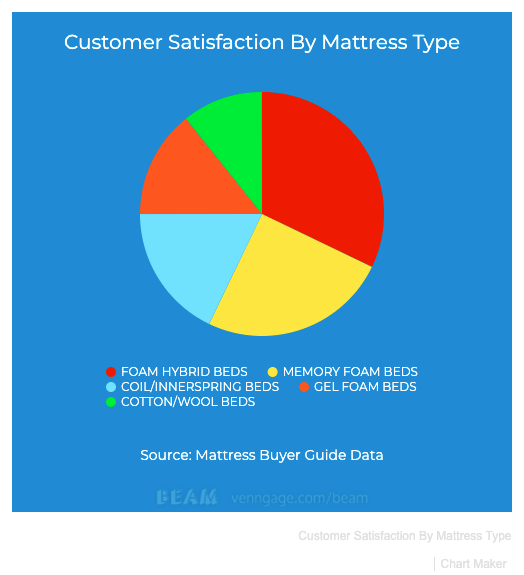
3. lifespan and durability by mattress type
Perhaps the most overlooked aspect of a sound bedding purchase is having a sense of awareness about the expected lifespan of the mattress. It used to be a common practice to replace a bed every twenty years or so, though the mattress industry has long been pushing the mantra of replacing your bed every eight years or so, and we tend to agree with that? Why?
Well, mattresses are essentially like clothing, and our bodies can leave debris and residue behind, which attracts dust mites, bacteria, fungal organisms, and other critters, and since we cannot wash them, it makes pure sense, strictly from a hygiene standpoint to replace a bed every 8-12 years. Also, be sure to use a mattress protector to cover your bed, as that alone will increase the lifespan a bit, as well as protecting against liquid spills.
Fortunately, as you can see from the chart below, the expected durability of the typical mattress you’ll buy online will maintain its durability and useful life for about 8-13 years, comfortably within the timeframe that you should consider a new mattress purchase.
Also, the cost of beds these days makes it easy to consider your purchase as somewhat disposable, starting out fresh every 8-12 years with a clean and sanitary sleep surface.
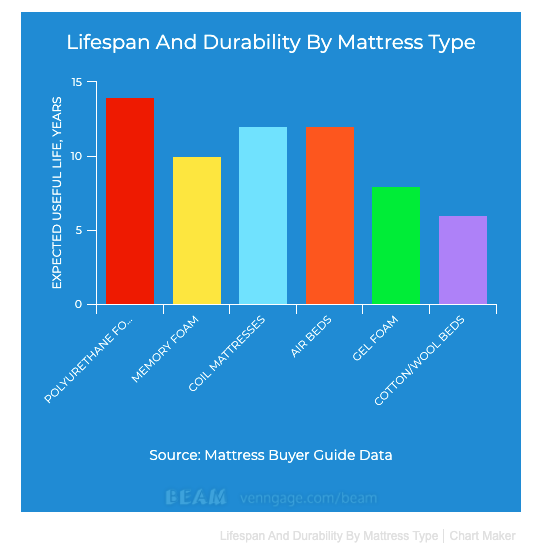
4. warranty conditions and return policies
If you are purchasing at a brick and mortar store, we generally advise trying any mattress you’re considering buying by lying on it for at least 10 minutes on each side, your back, and your stomach. Basically allowing your body to “size up” the mattress for comfort, sink, support, and degree of firmness.
Our mattress reviews on our Trusted Dealer page has factored in overall comfort on a general basis, and if you are buying online, you can’t “field test” your bed beforehand, making an easy, no fuss return policy important. We generally recommend that the company offers a no questions asked return policy for at least 90 days, although many companies allow up to a full year to return the mattress, and there should be no fee to return the product.
So, keep these bullet points in mind when evaluating a mattress online, even if it is one of the big players out there like Casper, Loom & Leaf, Tuft & Needle, or others.
- How long can you keep the bed before notifying the seller if you’re dissatisfied?
- How long after that do you have to arrange a return or exchange?
- Can return the mattress for a refund, or just an exchange (or store credit)?
- Do you need to repackage the mattress in the case of a return or exchange (many foam beds, for instance, are machine-folded into a box)?
- Who pays shipping for a returned mattress—and can you return it yourself?
- How much is any “restocking” or similar fee (often a percentage of the price)?
For warranties, there is a broad variety of options, though we’ve seen them tighten up to one or two models that generally work well and encourage people to buy. Our mattress reviews incorporate the caliber of the warranty of the mattress in question, too.
Here’s some comprehensive details about warranties. We recommend taking a hard look at this section, because warranties can be tricky. In general, you’ll likely find 10 year, 20 year, and even lifetime warranties, but only the first year will probably cover 100% of any defect. Beyond that, you will be likely dealing with a pro-rated scenario where you have to kick in for the repair or replacement.
What is a Warranty?
Essentially, a warranty is the device that insures a customer is protected if a product is defective. It there to make sure that customers have a remedy if the product they purchase is a “lemon.”
Almost all beds are sold with a written warranty, which usually arrives with the product. Though they share many characteristics, not all warranties are the same. Read the fine print.
How is a warranty different from a trial period?
One of the assets that has enabled the rapid expansion of online direct-to-consumer mattress products is the sleep trial. After purchasing the mattress and having it delivered, the sleep trial gives you a “test period” during which you can return the mattress and get a refund if you’re not satisfied with the mattress for any reason.
Most sleep trials these days hover around 100 nights, but they can range from 90-365 nights depending on the company, as we suggested earlier. Most trial periods also offer free return shipping or even pickup of a mattress from your home if you decide to return it.
This sleep trial is completely different from a warranty. A sleep trial lets you test out the mattress to see if you like it. The warranty protects you as the customer if the mattress was built improperly. The sleep trial allows returns for any reason, including general dissatisfaction with the mattress, whereas a warranty applies specifically to defects with the mattress. Warranties last much longer than sleep trials and are more restrictive in their application.
Does a Warranty Apply to the Whole Mattress?
A mattress is made up on multiple different parts including its internal components and its cover. In most cases, the warranty will cover defects or flaws in any of these parts. However, it is important to read the warranty carefully because some may be more restricted when it comes to the cover.
In addition, some mattresses are built with electrical components. For example, air beds have remote controls and pumps that regulate air in the mattress. Keep in mind that often these components are not covered under the same terms as the other mattress components. Usually, they have a shorter time period for warranty coverage. If you’re buying this type of mattress, make sure to look closely to know for how long the warranty will apply to these parts of the mattress.
What Is Covered By a Mattress Warranty?
Mattress warranties do not provide coverage for everything that can go wrong with your mattress. Instead, they tend to focus on specific problems that may arise. Remember that every warranty is written with its own specific terms, but this section gives an overview of what is usually covered.
Sagging
Mattress warranties typically provide recourse if the mattress starts to sag significantly. However, the way that the mattress company defines “significantly” may be different from the way that you would. In order to have a warranty claim, most mattress companies require that an indentation in the mattress measure at least 1.0 to 1.5” in depth.
Though you might notice indentations of a lesser depth, they would not be covered unless they reached the 1.5″ level. This also means that the warranty typically provides no coverage for minor sagging that just occurs as a result of regular use. Instead, it has to be a pronounced and deep level of sink for the warranty to apply.
Faulty workmanship or materials
You likely have a solid warranty claim if there is poor workmanship evident with your mattress. Some examples of this could include:
Defective seams that come apart
Coils that break and/or puncture the mattress exterior (in the case of an innerspring mattress)
Broken or torn mattress handles
Significant bunching of materials
Deformation at ends or edges due to compression failure
What Is Not Covered by a Mattress Warranty?
Unfortunately, the list of things that are not covered by a warranty tends to be longer than the list of covered items. Items not covered by most warranties include:
Sagging below the defined threshold: if your mattress starts to develop dips, sags, ot indentations, but it’s less than the stated threshold in the warranty (1- 1.5” in most warranties), there won’t be any coverage, even if this sagging is having a major effect on the support and comfort that you receive from your mattress.
Natural wear and tear: if the problem with the mattress comes about from its use rather than from faulty construction or materials, then you shouldn’t expect the warranty to provide any coverage. This includes natural weakening of materials, scuffs, scratches, discoloration of the cover (from use or washing), or minor lumps or bunching.
Owner damage: if you accidentally tear or puncture your mattress or cause damage to it in regular use or when moving it, it won’t be covered. This also includes damage that might be caused by a pet or by a child jumping on the mattress. If the damage happened by your hand, don’t expect warranty coverage. If urine comes in contact with the mattress, it will absolutely not be covered.
Dissatisfaction with performance of the mattress: the warranty is not designed to assure your satisfaction with the performance of the mattress from the perspective of support or comfort. It also doesn’t cover any issues related to the size or height of the mattress, whether it sleeps hot, whether it’s good for sex, or whether it permits too much motion transfer.
It’s critical to know in advance that your warranty won’t cover your purchase in these cases, and it makes it all the more important that you choose wisely when shopping for a mattress.
How Does a Mattress Warranty Become Void?
In order to be able to file a warranty claim if something goes wrong, the warranty has to be valid. The fine print of a warranty generally states various actions that can cause the warranty to become voided. For example, almost all of these issues would be likely to void a mattress warranty:
Removing the “law tag”
Every mattress has a tag on it that gives some basic details on the mattress. On the tag, you’ll see some variation of this phrase clearly printed: “Do Not Remove Under Penalty of Law.” That phrase is why this is known as the “law tag.” For mattress makers, this is part of your proof of purchase, and they generally will immediately reject a warranty claim if this tag has been removed from the mattress.
Transferring ownership
A standard stipulation in the fine print in mattress warranties is that any transferring of the mattress to another person voids the warranty. This means that if you sell the mattress or give it to a family member or friend, they will not be able to make a warranty claim even if something goes wrong.
Customer misuse
Because the warranty is designed to offer protection if the mattress was not built properly, mattress companies are quick to void a warranty if there are signs of customer misuse that could relate to the problem with the mattress. Examples of customer misuse that can void a warranty include:
Not following instructions for supporting the mattress: most warranties state that the mattress must be used with a certain type of support base in order for the warranty to be valid. Make sure that any frame or box spring that you use complies with the terms stated in the warranty in order to avoid this issue.
Failure to rotate the mattress as directed: the warranty may state a certain frequency with which the mattress must be rotated in order for the warranty to remain valid.
Stains: many warranty claims are denied because of stains, even small stains and even ones that may not appear to be related to the issue that the customer is having with the mattress. A mattress company may take stains as a sign of general misuse that can void a warranty.
Warranty Lengths
As you look at different mattresses on the market, you may notice that there’s a wide variation in the length of the warranties that are offered. The typical range is between 10 and 20 years. Our mattress reviews generally favor companies that offer this time span.
It’s common for shoppers to assume that the length of the warranty is the same as the expected lifespan of the mattress, but this is not the case. In most cases, a mattress gives out from wear-and-tear well before the end of the warranty period. In order to judge the likely durability and useful life of a mattress, look at the quality of its materials and construction, not at the length of its warranty.
Prorated Warranties
One important element of mattress warranties that you need to be aware of is that some are prorated while others are not. This relates to what kind of remedy you are entitled to if you have a valid warranty claim. As a general rule, non-prorated warranties are better for you as the customer.
In a non-prorated warranty, the remedy for a defective mattress is the same throughout the entire warranty period. In most non-prorated warranties, for example, this means that if the mattress is defective at any point during the warranty coverage, the company will repair or replace your mattress at no cost to you.
Usually the only costs that you might have with a non-prorated warranty could be for transportation of the mattresses and/or for the inspection of your mattress to validate your warranty claim.
In a prorated warranty, the remedy changes depending on how long the warranty has been in effect. For example, as time elapses, the company may not offer a refund or replacement but may provide only a percentage of the value of the mattress as a refund. These types of gradual declines in the value of your remedy can be different for each manufacturer, so this is yet another reason to carefully read through the warranty before purchasing a mattress.
Not all warranties fit neatly into the categories of “prorated” or “non-prorated.” Some mattresses also come with a warranty that is a combination of prorated and non-prorated timeframes. An example would be a 25-year warranty that would be non-prorated for the first 10 years (offering a full refund or replacement) and then prorated for the last 15 years (with a gradually decreasing monetary value provided in case of a valid warranty claim).
How to File a Warranty Claim
If you notice a defect in your mattress that you think may meet conditions listed under your warranty, follow these steps:
Take a series of photos of your mattress that provide the best evidence possible of any problems or defects.
Find a copy of the mattress warranty and look at the terms and conditions in detail. Honestly assess whether your warranty is still valid and whether your situation meets the circumstances under which the warranty may apply. In this process, make sure to ask yourself, “how or why might this claim be denied?”
Contact the company that you bought the mattress from. In some cases, you will need to deal with the retailer for warranty issues. If the retailer refers you to the mattress maker, or if you bought directly from the manufacturer, then contact the manufacturer to initiate a claim.
File any required paperwork or forms in order to initiate a warranty claim. Make sure to read these forms carefully for any notations about costs involved with filing the claim. If requested, submit any photos or other evidence of the problem.
The company likely will send an inspector to examine your mattress and review your claim. This usually comes at a cost to you of $25 to $50. This may be refunded if your claim is determined to be valid.
If you have a valid claim, you may also be responsible for shipping the mattress back. This can cost between $50-$100 depending on the shipping method. Again, some companies may pay this cost if you have a valid claim.
Communicate with the company directly about the process for processing your claim and determining your remedy. Make sure to advocate for yourself to try to speed this process up as much as possible.
Be aware that there is a strong chance that your warranty claim will be denied. This doesn’t mean that you should never file a claim, but it is necessary to be realistic, especially when assessing whether or not your mattress warranty will still be valid or whether it could be void due to things like stains or signs of misuse.
Tips for Extending the Life of Your Mattress
When most of us think about a warranty, what we’re really hoping for is to never have to use it at all. When we put good money into a major purchase, we want to make sure we get as much quality use out of that purchase as possible. In that vein, there are steps that you can take that will both help with upkeep of your mattress and make it more likely that your warranty will still be valid if you do need to file a claim:
Try to keep pets and kids off of your mattress: children and animals can both put a great deal of strain on a mattress. Whether it be from spills, accidents, jumping, or sharp paws, it’s easy for a mattress to get damaged by your kids or pets, and this kind of damage is likely to invalidate a warranty.
Use a mattress pad or protector: these are products that provide an extra layer or barrier to defend the mattress against things like spills and stains. A mattress protector offers more robust defense by fully encasing the mattress, but a mattress pad can still be helpful as well.
Don’t skimp on your mattress base: it may be tempting to buy the cheapest frame on the market, but remember that both the frame and the mattress are involved in supporting you during sleep. In addition, a faulty frame or a frame that doesn’t meet certain characteristics can void your warranty.
Follow a regular mattress cleaning routine: there are a number of ways that you can keep your mattress clean and fresh.
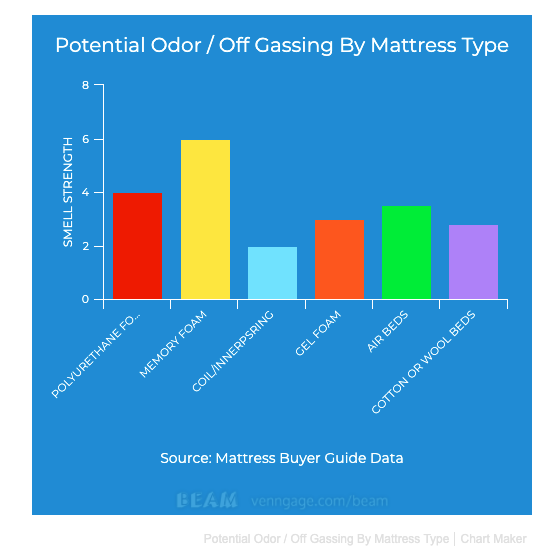
Don’t Know Which Bed In A Box To Buy? Here Are Some Pointers To Narrow Your Options Even More
At first glance, buying a bed online seems fairly simple. and for the average owner, finding a bed that works isn’t rocket science. However, being in the industry for over 20 years, I’ve worked with customers who have very particular problems or issues with sleep, and finding the perfect fit is like finding a diamond on the beach.
Here’s an example, and most people take this one for granted. Edge support. When you wake up, do you linger on the side of your bed for a moment or two? Do you have issues transferring in and out of bed? If so, you’d be surprised to know that many manufacturers offer no specialized edge construction which will support you properly and keep you from simply sliding off of the edge of your bed!
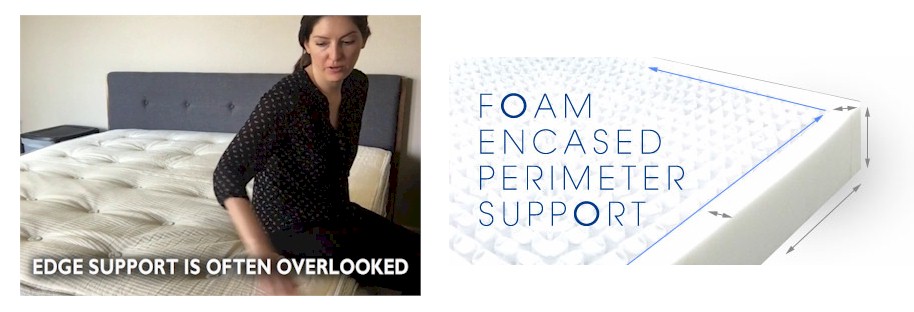
Proper edge support can be a problem for many people, however. Let’s say you are a sprawler, and like to dangle over the edge of your mattress. You may find that you are lying on a stiff ridge and having a firmer edge foam might not work for you. Consider this when purchasing, and factor that in to your test “trial” with the mattress of your choice.
Another common complaint I often heard from customers through the years was sensitivity to scratchy and itchy mattress coverings, referred to as the “ticking” on the mattress itself. A bed’s outer encasement and the fabric used for the exterior protects the mattress, gives the bed its signature look, and contributes greatly to the finished feel of the mattress.
Tickings can be made from a host of fabric options, from synthetic to organic, from complex and technologically advanced cooling materials, to copper infused textiles. Mattress review sites rarely evaluate this when providing overall ratings for beds.

If you are sensitive to “things that scratch”, or have sensitive skin, or sleep hot, a covering that is composed of wiry or coarse textiles may often have tiny endings that come at you like a thousand needles. Fibers can even protrude through sheets, so if you have this issue with a mattress, I always tell people to buy higher thread count sheets, which is a way to bulletproof your body from poking and prodding fibers.
Organic fabrics, or fabrics that have not been treated with a smoothing agent can be notoriously “scratchy”. Hemp and cotton, especially if woven and not knit, can be a bit more coarse.
Another recommendation would be to use a mattress protector or encasement, which can also reduce the tactile interference, though you may sacrifice breathability if you are a hot sleeper, so factor that in as well. Mattress protectors should always be used where possible, regardless, to protect from liquid spills, sweat, and to keep out dust mites allergens, and to keep your mattress in pristine condition.
Tips And Pointers To Make Comparison Shopping A Snap…
One of the most frustrating things about buying a mattress has long been how difficult manufacturers make it to comparison shop. Unlike products that have the same name or model number no matter where they’re sold (a Samsung Family Hub refrigerator, for example, or a Vitamix blender), mattress makers often give the same model different names depending on where it’s sold, making it almost impossible for a consumer to compare prices.
(They might also make slight changes in construction or materials from one retailer to another.) So don’t expect a salesperson to be able to guide you to a comparable model. And if you are shopping online, rest assured, many
Mattress dealers are playing cups and balls with you by switching out layers of foam using colored dyes to make them appear more glamorous or technical, and by changing the outer cover to ramp up the price. All in all though, today’s online retailers generally keep things simple, since they want the user experience to be the total opposite of the gauntlet like experience we became accustomed to when walking into a mattress showroom.
Hundreds of choices, dozens of manufacturers, listening to pinky ring wearing sales guys, who know little or nothing about the components or technical information trying to sell you the most important and intimate product in your life, something you will spend a third of you life using, at any given moment.
Bed-in-a-box sellers have eliminated this frustration from the buying process by paring down the choices. Many of these companies sell just one mattress, betting that it will suit most sleepers. Independent testing results shows that in theory, at least, this approach can work.
“We’ve seen several bed-in-a-box mattresses come through the lab that perform consistently, at a level of Good to Excellent, for sleepers of every body size and sleeping style,” says Chris Regan, a test engineer who oversees Consumer Reports mattress testing program. In fact, the top-rated foam beds-in-a-box score Very Good or Excellent in our support tests for petite, average, and large and/or tall sleeper
SAY GOODBYE TO ‘TRY BEFORE YOU BUY’
Consumer Reports, for example, has long advised readers to lie on a mattress in a store for at least 10 to 15 minutes before buying. However, buying online eliminates the ability to do this. The workaround is simple. Really amazing trial periods, and solid warranties, along with a free shipping and return policy,
Our most recent mattress survey showed that the longer people try out a mattress before buying it, the more likely they are to be satisfied with their purchase. Ordering online prevents this opportunity…
Certain companies have worked around this limitation by teaming up with walk-in retailers. For example, you can now try a Leesa mattress at West Elm and buy it there for the same price offered at their web site. Casper has twin-size mattresses on display at Target that you can curl up on to see how they perform. However, the vast majority of online dealers do not have a retail presence but have a strong online presence.
Our dealer page gives you the opportunity to shop for alternatives other than the most commonly advertised brands. We’ve found many small companies that we believe offer a superior foam mattress with great discounts, stellar reviews, and terrific trial periods and warranties. The Puffy Mattress, for example, is a great example of a hybrid foam mattress made with just the right recipe of a gel infused memory foam and a super high quality polyurethane foam base.
The company, featured on the Ellen show, uses the highest grades of forward thinking foam and an outstanding fabric covering. In addition, they use a non-toxic, clean and heavy metal free foam construction, using a graded foam made using a process called Certi-Pur®. The foam is used by several retailers we recommend, and is the safest material to use for bedding that reduces exposure to harmful ingredient.
A handful of the large bed-in-a-box companies have showrooms in large metropolitan areas, so if you’re interested in a different brand but you’re not ready to buy a mattress sight unseen, check the company’s website to see whether it has a showroom nearby. If it doesn’t, you can refer to our trusted dealer list to see if the manufacturer is on our list. If it isn’t, you may want to consider someone we recommend. Find your size and favorite sleep position, and note the models that provide adequate support for you—and for your sleeping partner.
Unlike mattresses sold at retail, which are usually marked up significantly and offer more price flexibility, bed-in-a-box mattresses are generally sold at a fixed price, making it difficult to haggle. However, we’ve found that the pricing, because it is so competitive in this category, are extremely reasonable and now is the time to get a great deal.
And, there are other ways to save. Check the sellers’ websites for special offers such as a free pillows, sheets, comforters, or other specials. Get on the chat with every site you visit, tell them you were referred by The Mattress Buyer Guide, and you may get added discounts and benefits. Plenty of bed-in-a-box firms offer discounts around the same holidays that traditional retailers do—Presidents Day, Labor Day, and Black Friday. Use a website’s customer-service chat feature to ask about coming promotions or discounts.
MAKING YOUR MATTRESS FEEL AT HOME
Mattresses usually arrive a few days to a week after an order is placed. Although the cartons are compact (the queen-size Lull, for example, comes in a 19x19x43-inch box), they can be heavy, ranging from 60 to 150 pounds, and difficult for someone to wrangle alone.
Shipping is often free, but for an additional fee almost all of these companies offer white-glove delivery, similar to the services offered by a traditional retailer. A bed-in-a-box type mattress, which is usually foam, is compressed and rolled or folded (or both) before shipping.
Most manufacturers recommend unboxing a new mattress within a month or two after it’s delivered. If you’re setting it up yourself, follow the steps outlined by the manufacturer. If you bought a bed frame or platform, put that together first. Also, many dealers sell quality hybrid mattresses which feature pocketed coils, latex, and other components.
Check out our recommended dealers, and you ‘ll see the component description on every vendor we recommend. We also offer a rating, from 3-5, with the occasional 6, for mattresses we deem to be of superior quality.
Because it can be heavy and unwieldy when fully open, always take the mattress to the bedroom while it’s still in the box, Regan says. “Once you take it out of the box, put it on your box spring or platform before removing the plastic.” (See “Do You Need a Box Spring?” below.)
“Some will be wrapped in multiple layers of plastic; others have only one,” Regan says. “You can use scissors or a knife to open them, but take care not to puncture the mattress.”
Once the wrapping is removed, the mattress regains the volume that was lost when compressed for shipment. It can take a few minutes to a few hours for the mattress to regain its full shape.
The materials in new mattresses can give off an odor, some of which is caused by the breakdown of volatile organic compounds in the foam. “More research is needed to determine whether or not there are any chronic health risks from long-term exposure to VOCs in mattresses,” says Don Huber, CR’s director of product safety.
“The odor should dissipate in a few hours or, at most, a few days. You may want to wait until the odor goes away to sleep on your new mattress.” Opening a window could help the odor dissipate more rapidly.
DO YOU NEED A BOX SPRING?
A box spring, which serves as a foundation for a mattress, adds to the cost of new bedding, tempting many to do without one. Opinions vary on whether a box spring is really necessary. The International Sleep Products Association says the box spring is responsible for much of the comfort and support a mattress provides, but some mattress sellers say all that many of today’s models require is a sturdy surface, such as a platform bed.
Our advice is simple. Any hard, rigid surface that does not compress more than one inch when you sink most of your weight into the edge or center, is fine, regardless of the material.
Certain retailers press the issue harder than others. Casper, for example, recommends that buyers of its mattresses use Casper’s own foundation or bed frame. Lull says its mattress will work with everything from box springs to a slatted bed frame to the floor.
You do not need to purchase a matching foundation from the same manufacturer to either improve or maintain the lifespan of the mattress. Remember this, there is even more profit in selling you a matching foundation, which can often sell for $300-400, and cost $50 to make. We know, because we’ve manufactured them ourselves.
take advantage of excellent return policies and trial periods…
As the old saying goes, you can’t stuff the genie back in the bottle. The same is true for beds-in-a-box. Return policies vary, but if you decide you don’t like your mattress during the trial period, you can usually get your money back. Fortunately, you won’t have to put the mattress back in the box.
Some sellers provide a full refund but don’t want the mattress back. Instead, they’ll help you donate it to a charity or nonprofit in your area. Tuft & Needle, for example, as well as other companies, say they will help you find a charity that will pick it up. If there is no group in your area that will take it, these companies and others will arrange for the mattress to be picked up.
Many bed-in-a-box companies observe similar trial periods of 100 days or more, but some, such as GhostBed and WinkBeds, require you to keep the mattress for at least 30 days before arranging a return. In the end, only a surprising 7 percent of the beds-in-a-box that are purchased are returned, according to 1010 Data, a data analytics company. That’s more than the 2.2 percent returned at Mattress Firm but an indication that most consumers are pleased with their purchase.
In case you’re not one of them, be sure you understand the company’s return policy before you buy. And if you have the space and really want to be on the safe side, hang on to your old mattress until you’re sure that you’re going to stick with your new one.
Why It’s Important To Buy Just The Right Mattress…Sleep And Health Should Be Priority One
Think shopping for a mattress is strictly about comfort and support? I’ve been in the bedding industry trenches for 25 years and I’m still amazed at the number of human beings who struggle with sleep issues. Many are desperate for the least little bit of shuteye.
Sandwiched between a wicked day time schedule and the leisurely (if you’re lucky) activities after work, you know, the work/life balance thing, millions of people don’t understand-and factor in- the importance of choosing the right sleep surface which will provide effective sleep induction, and deep restorative sleep.
Sleep induction is the component of sleep that involves relaxation and falling asleep, and is what most people need to tune into when choosing a mattress. Research is pretty solid on the health benefits of sleep. It helps memory and mood, keeps you trim, strengthens your immune system, fights inflammation, and keeps your heart and blood vessels in tip-top shape. When you zone out, your body is busy at work.
For example, the brain is busy doing housekeeping, removing proteins and toxic materials that clutter up your mind’s hallways during the night, and reorganizing its files so to speak. Like running an anti-virus program at night, your brain needs a solid 6-9 hours, the time varies from person to person, to reboot.
When you’re sleeping you’re regulating hormone levels, you’re regulating insulin levels, even your blood pressure is being kept under control, there are a lot of things going on, and if you’re not getting enough sleep you’re throwing these things out of whack,” says Shelby Freedman Harris, PsyD, director of behavioral sleep medicine at Montefiore Medical Centers Sleep-Wake Disorders Center in New York City.
“While you’re snoozing, the body repairs damaged tissue, produces crucial hormones, and strengthens memories, especially short term memories you urgently need to have access to day to day, a process called consolidation, which helps you perform a learned skill better after sleeping than you would if you spent an equivalent amount of time awake.
It’s a way for the body to integrate everything that happened over the past waking day and to prepare for the next day. The most sensitive organ at risk when you don’t sleep properly? Your heart. Short term stretches of insomnia are one thing, but long periods of poor sleep can be downright damaging.
Your heart requires a good night’s sleep
Short sleepers, typically defined as people who get less than six hours of sleep a night, as well as people who don’t spend enough time in the deepest stages of sleep, are at higher risk of heart attacks and strokes than those who get at least seven hours.
A 2011 study of male Japanese factory workers found those who slept less than six hours a night had a 500% increased heart attack risk over a 14-year span of time compared with those who clocked between 7 and 8 hours a night. Another study published the same year found that healthy men 65 and older with normal blood pressure were nearly twice as likely to develop high blood pressure during the study if they spent less time in the deepest sleep stage (known as REM, or rapid eye movement sleep) compared with those who spent the most time deeply asleep.
There’s even evidence that strongly suggests short-term sleep deprivation may be harmful to those with heart problems. In 2012, researchers reported that hospital admissions for heart attacks increased by about 4% in the week after the spring transition to daylight saving time compared to other weeks.
It’s not totally clear why sleep may affect the heart, or if there is some unidentified factor that affects your cardiovascular system and ability to sleep. But one nighttime problem is a known heart hazard-sleep apnea. People who have sleep apnea tend to snore and have upper airway collapse during sleep. This causes them to wheeze, snore, and ultimately gasp for breath, without really waking up enough to be conscious of it.
This is all the more reason to find a mattress that your body is comfortable with. You should fall asleep within 10-15 minutes, assuming you’ve turned off all media equipment, dimmed the lights, have not consumed alcohol with 3 hours of lying down, and established a night time ritual that brings you into a state of calm beforehand. Sleep apnea can be deadly.
“It feels like someone is choking you, your heart spikes, your blood pressure increases dramatically, and instead of having a period of rest and calm where everything slows down at night, your body and brain are running a marathon during the night,” says Charles Czeisler, MD, a sleep professor at Harvard Medical School in Boston. “Over time, even your daytime blood pressure increases with sleep apnea.” In fact many experts think sleep apnea may account for one-third of all cases of high blood pressure among adults.
If you’re feeling fatigued during the day and your partner says you snore, you should ask your doctor about sleep apnea. “There’s enough evidence out there suggesting that sleep apnea is bad for you even in the short term, and people need to take it seriously,” Dr. Somers says.
Simple hack: People with less severe sleep apnea may be able to get their symptoms under control by just adopting strategies that prevent them from sleeping on their back, for example sewing a tennis ball into the front pocket of a T-shirt and wearing it backwards, Harris says.
There are even shirts that you can buy with built in padding to prevent back sleeping. Find a mattress that encourages you to sleep on your side and keep your body moving. Too soft and immersive, and you sink, trapping yourself in the “on your back position”, instead of being cradled on your side, keeping airways open. If you have sleep apnea, we recommend something firm and resilient instead of too soft. Try a firmer foam bed, a latex mattress, or something without a poofy pillowtop.
In severe cases, a device can help prevent the lower jaw from falling backwards into the airway, Dr. Somers says, or a sleep apnea mask that delivers positive pressure air into the nose (called continuous positive airway pressure, or CPAP) keeping your airway open at night.
Can Lack Of Sleep…Make You Fat?
Recent research also suggests that a lack of sleep could be contributing to problems like diabetes and weight gain, both obvious health risks. Some studies have linked shorter sleep spans to a greater likelihood of obesity, but whether or not sleeping less is a cause or effect of obesity remains unclear.
What we do know is that sleep deprivation reduces sensitivity to insulin, the hormone that regulates blood sugar, while making it harder metabolize glucose properly. Short sleep also increases levels of hormones that make us hungry, while reducing secretion of the hormones that help us feel like we’ve eaten enough.
So it makes sense that being starved for sleep could lead to weight gain, even if only for the fact that being awake longer gives us more time to eat. Factor in being too tired to exercise, and you double the likelihood of gaining weight, adopting a more sedentary lifestyle, and establish bad habits that affect sleep.
When people are sleep deprived and eat a cookie right before bed time for example, their blood sugar spikes, and they’re more resistant to the effect of insulin than if they ate the same cookie upon wakening, after a good night’s sleep, says Dr. Czeisler, Harvard sleep doctor. “If you are on a diet to lose weight and you’re sleeping five to six hours a night, 75% of the weight you lose will be lean body mass.”
“A lot of people who don’t get enough sleep often say they have trouble losing weight, or they have this slow weight gain,” notes another sleep expert. Often, she continues, people who start getting treatment for sleep apnea find that once they’re sleeping better, it becomes easier for them to lose weight, and losing weight may help lessen sleep apnea symptoms.
“You don’t have to be overweight to have sleep apnea, but if you are, sometimes losing at least 10% of your body weight can reduce the severity of your sleep apnea”, another expert claims.
How to get a better night’s sleep
So you crawl into bed, prepared for a healthy seven or eight hours and then suddenly find yourself staring at your digital clock for four of them. Is all lost? If you have trouble sleeping for a few days here and there, taking steps to improve your sleep should get you back on track. And you can be assured that you are in excellent company. According to a recent poll, 60% of US adults say they have sleep problems almost every night.
The first step for anyone with sleep problems should be to take a careful look at your sleep hygiene, Harris says. This means situating your surroundings and activities to promote sleep as your ideal bed time approaches. Skip caffeine after noon, she advises, including chocolate and herbal teas. Avoid alcohol or heavy meals within three hours of bedtime. That’s a tough one, I know.
Exercise is great for sleep, especially falling asleep, or sleep induction. You’ll get the most benefit by working out five to six hours before bedtime. A hot shower or bath about an hour and a half before bedtime can also be helpful.
Reserve your bed for sleep and sex
“If you can’t sleep, get out of bed, go somewhere else, do something quiet, calm and relaxing, go back to bed when you’re sleepy again, but avoid tossing and turning. Go to bed and wake up at the same time, generally within an hour or two.
Finally, don’t make your TV, social media, and your cell phone your final event of the evening. Blue light and white light tell your body that it’s not bedtime yet. Using devices is clearly eating into our sleep time. People are spending more time being connected than sleeping. Texting friends, playing computer games, or just watching TV stimulates our brains and bodies at a time when we should be winding down.
When it gets dark, our bodies release a hormone called melatonin that helps induce sleep, and pre-bedtime bright light exposure, especially exposure to the blue light wavelength emitted by screens large and small, shuts down melatonin release.
People with long-standing, chronic insomnia need more than a sleep hygiene adjustment. A few sessions of cognitive behavioral therapy, designed to help people change the way they think about challenging situations, like insomnia, respond more positively to them.
“In the sleep field we actually recommend that patients do that first, because it’s short-term and it’s better than becoming an Ambienite,” she adds. However if all else fails, short term use of medications may be necessary, especially to get your body back in tune. “They have a place certainly,” says Dr. Somers, “but they need to be used carefully and thoughtfully.”
But what if you seem to thrive on just six hours of sleep a night? There’s no question that there’s a range of sleep time frames for most people, like there’s a range of every physical function, but exactly what the normal boundaries of that range are largely unknown.
The best way to be sure that you’re sleeping enough is to wake up spontaneously without the use of an alarm clock and to feel rested when you wake up. If those things happen and you’re not feeling sleepy during the day, then you’re probably sleeping enough.
off gassing, odors, and how to get rid of that “new bed smell”
One of the most common complaints observed with foam bedding purchases, which typically are not even mentioned on mattress store sites, or even on so-called “mattress review” sites, is the problem that some individuals have with the smell, or off-gassing, that various kinds of extruded or blown foams can possess.
Typically, when a foam mattress is fabricated, it is compressed and shipped directly to the consumer without proper ventilation, and if customers were simply given a little bit of information about how to handle this issue, many mattresses would not be returned without bedding given a fair shot.
Despite claims that the unusual smell that is often detected upon opening your bed in a box will asphyxiate you, even after selling countless tens of thousands of foam mattresses ourselves, we don’t recall anyone dying or dropping to the floor.
The materials used in foam fabrication while in liquid form might be hazardous, but once solidified, they are harmless. You might be extremely sensitive to chemical odors, perfumes, or other materials, but following a few simple guidelines will insure that you install a “stink free” mattress.
While the graph below shows memory foam as usually being the culprit of smelly mattresses, simply let it air out, the smell will rapidly disappear. You may have a slight lingering smell for a week or so, but it will eventually be completely gone.
- Upon receiving a compressed and sealed bed, unpack it in a large open area first, preferably a living room, great room, or even patio or covered exterior area. The more atmospheric ozone that can chip away at the bed, even for a few hours, the better. Ozone will rapidly eliminate any odor. If you have to get it into your bedroom to unfurl it, open a window, run an air cleaner machine, and let the mattress site, overnight, without sheets installed, to air out for at least 12 hours.
Hit the exterior top of the mattress with unscented Febrize or other non VOC based air cleaning spray.
Do not install a mattress protector for 7 days after you receive the bed.
